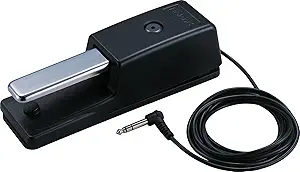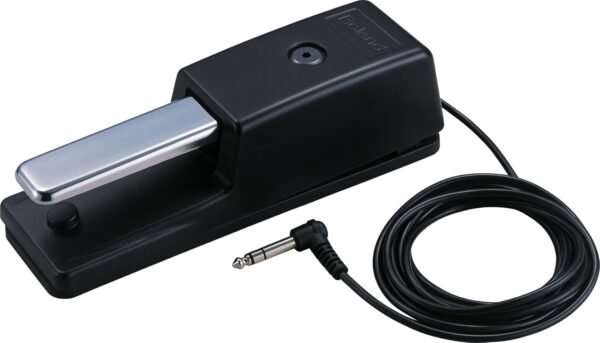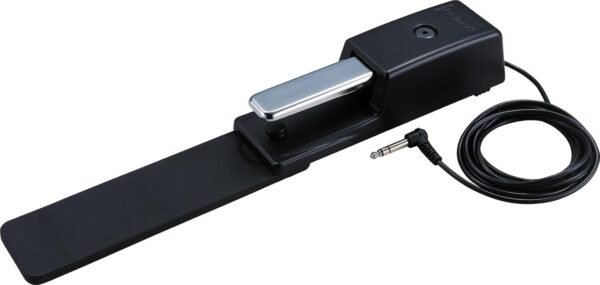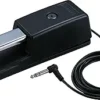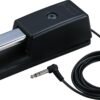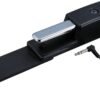Roland DP-10 Pedal Review Durable Non-Slip Design for Keyboard Enthusiasts
Roland DP-10 Pedal Review Durable Non-Slip Design for Keyboard Enthusiasts
- Sturdy construction ensures durability, even with frequent use during practice or performances.
- The non-slip rubber plate provides excellent stability on smooth surfaces, preventing movement while playing.
- An extended cable length makes it perfect for multi-keyboard setups, offering greater flexibility in positioning.
- The realistic pedal response enhances the playing experience, mimicking acoustic piano pedals.
- Half-damper compatibility allows for nuanced control, giving dynamic expression to performances.
As an Amazon Associate I earn from qualifying purchases.
Description
Elegant Design and Practical Build
The Roland DP-10 Real-Feel Pedal immediately caught my attention with its solid build and thoughtful design. This isn’t one of those flimsy pedals you casually toss around. Weighing in at 1.69 pounds, it feels sturdy, and the combination of plastic, metal, and rubber materials makes it durable yet sleek. The non-slip rubber base is an absolute lifesaver, especially if you’re like me and tend to play on hardwood floors or other slippery surfaces. I’ve had pedals skid around mid-performance before, and it’s not the kind of drama I enjoy during a set. This pedal stays put, even when you’re putting some serious pressure on it.
Its compact dimensions (9.5 x 4 x 3 inches) make it easy to carry around without sacrificing usability. And while it’s not a flashy piece of gear, the simplicity in its “Original Version” color scheme is appealing. I appreciate tools that focus on functionality over unnecessary frills, and this pedal delivers exactly that.
Performance That Hits the Right Notes
Performance-wise, the DP-10 doesn’t disappoint. It’s equipped to handle half-damper functions, which is a game-changer for anyone using a compatible electric keyboard. This feature allows for more nuanced playing, and I found it incredibly responsive. Whether you’re after a subtle sustain or a full-bodied damper effect, this pedal ensures your playing translates beautifully. Testing it on a Roland RD-2000, I was amazed at how fluid and natural the transitions between half and full damping felt.
If you’re not using a keyboard with half-damper capability, don’t worry. The pedal also functions perfectly as a standard pedal switch, offering reliable sustain without any fuss. Its versatility makes it suitable for various setups, and I’ve even used it with a stacked keyboard configuration thanks to the 2.2-meter extended cable. That extra length might not seem like a big deal, but trust me, it makes all the difference during live performances or intricate studio arrangements.
Key Benefits
- Non-slip rubber base ensures stability on all surfaces.
- Half-damper compatibility provides nuanced sustain control for advanced players.
- Extended 2.2-meter cable is ideal for multi-keyboard setups.
- Sturdy build with durable materials offers longevity.
Hurdles to Watch Out For
While I’m a fan of the DP-10, it’s not without its flaws. For starters, the weight—though a sign of quality—might be a bit much for those looking for a lightweight travel option. Carrying this around regularly can add up if you’re already lugging heavy gear.
Another point worth mentioning is the rubber material on the base. While it’s great for preventing slippage, it does tend to pick up dust and dirt over time. Cleaning it isn’t difficult, but it’s an extra step I hadn’t anticipated. Lastly, the corded electric power source might not appeal to everyone, especially in a world leaning toward wireless solutions.
- Heavier than some competitors, making it less portable.
- The rubber base requires frequent cleaning to maintain its grip.
- No wireless option, which might be a drawback for modern setups.
Market Rivals
Looking at other keyboard pedals, the Yamaha FC3A and M-Audio SP-2 are strong contenders. The Yamaha option also supports half-damper functionality and has a sturdy build, but it doesn’t offer the same extended cable length, which can be a dealbreaker for certain setups. The M-Audio SP-2, on the other hand, is a more budget-friendly option and performs well as a standard sustain pedal. However, it lacks the half-damper compatibility and overall durability of the Roland DP-10.
Where this pedal truly shines is in its stability and nuanced performance. The non-slip rubber plate is a feature I didn’t appreciate until I tried other pedals that slid all over the place. While the Yamaha might rival it in responsiveness, the DP-10 edges ahead with its superior build quality and practical cable design.
Worth Every Penny
When it comes to value for money, this pedal stands out. It may not be the cheapest option on the market, but the combination of durability, advanced features, and trusted brand reputation makes it a worthwhile investment. I’ve tested pedals that felt like they’d break apart after a few months, but the DP-10 seems built to last years of rigorous use. If you’re serious about your music and need a reliable, versatile pedal, this one delivers on all fronts.
Comparing it to less expensive options, I can confidently say that the price-performance ratio here leans heavily in favor of the buyer. Sure, you’re paying slightly more, but what you’re getting is a pedal that feels professional and performs consistently, whether in a studio or on stage.
The Roland DP-10 Real-Feel Pedal is a stellar choice for serious musicians. From the half-damper compatibility to the non-slip stability, it ticks all the right boxes. While there are a few minor drawbacks like its weight and cleaning maintenance, these are small trade-offs for the quality provided. It’s a pedal that doesn’t just meet expectations—it exceeds them.
Additional information
| Item Weight | 1.69 pounds |
|---|---|
| Product Dimensions | 9.5 x 4 x 3 inches |
| Country of Origin | Japan |
| Item model number | DP-10 |
| Is Discontinued By Manufacturer | No |
| Color Name | Original Version |
| Hardware Interface | HP-HSC |
| Signal Format | Analog |
| Material Type | Plastic, Metal, Rubber |
| Power Source | Corded Electric |
| Voltage | 9 Volts |
